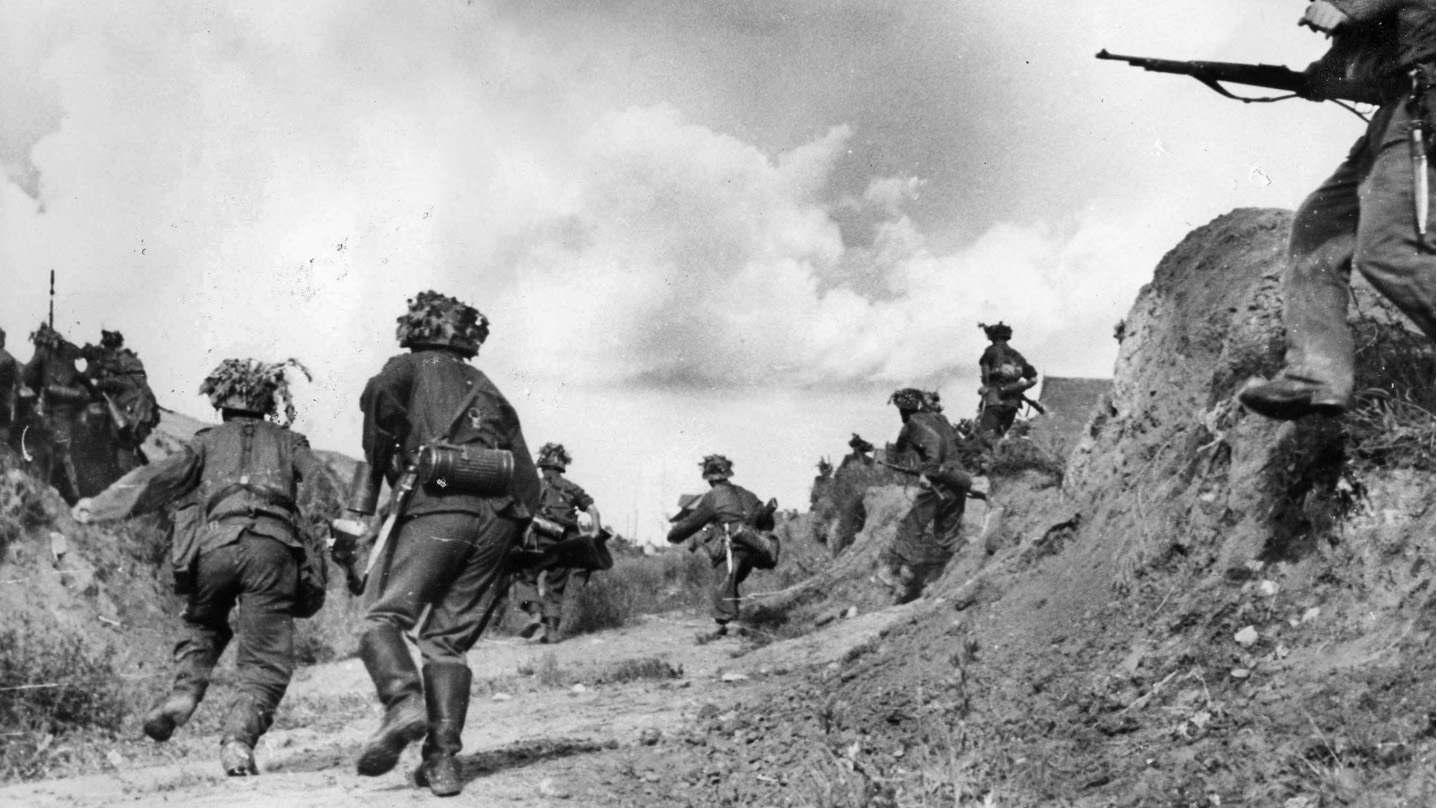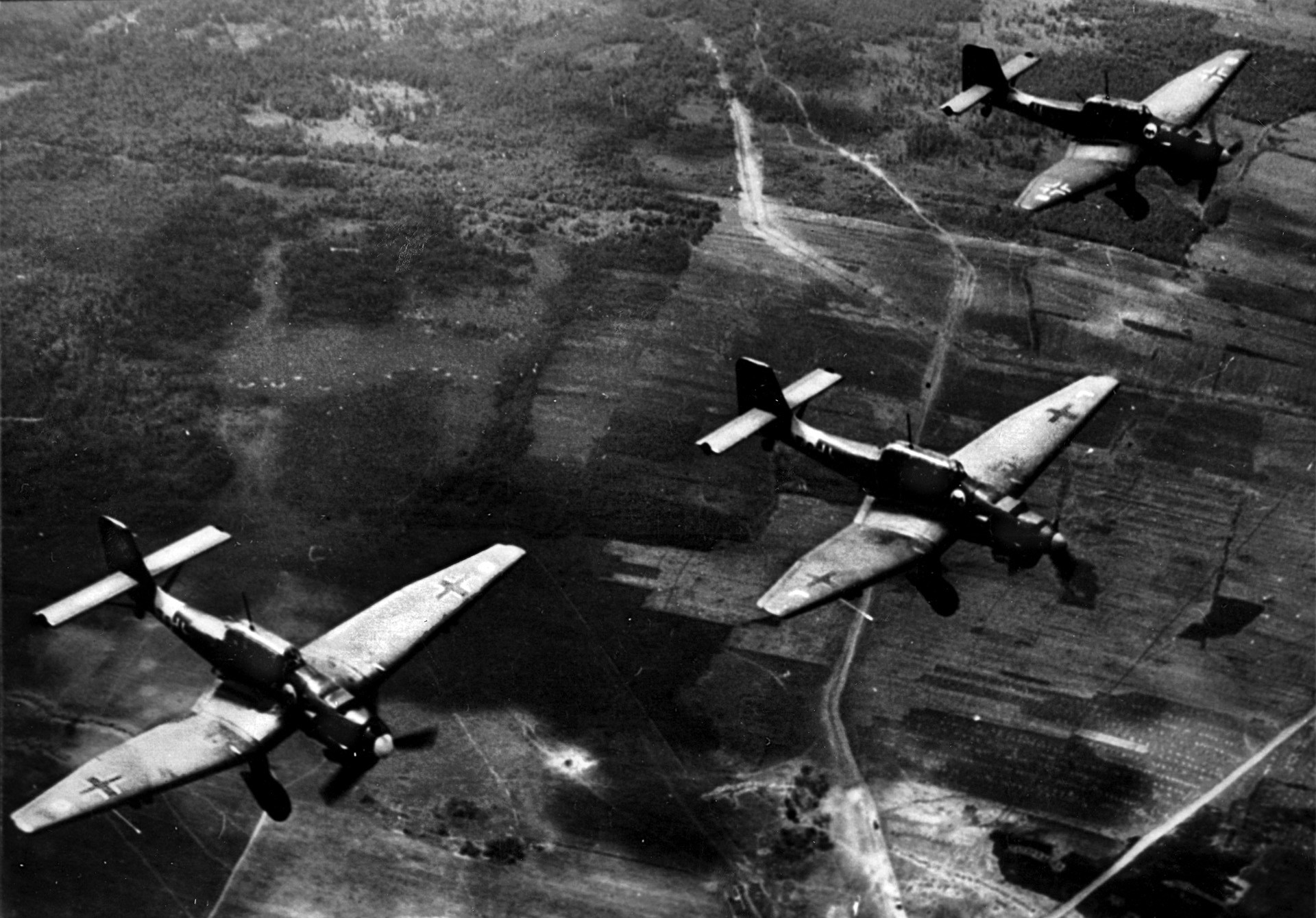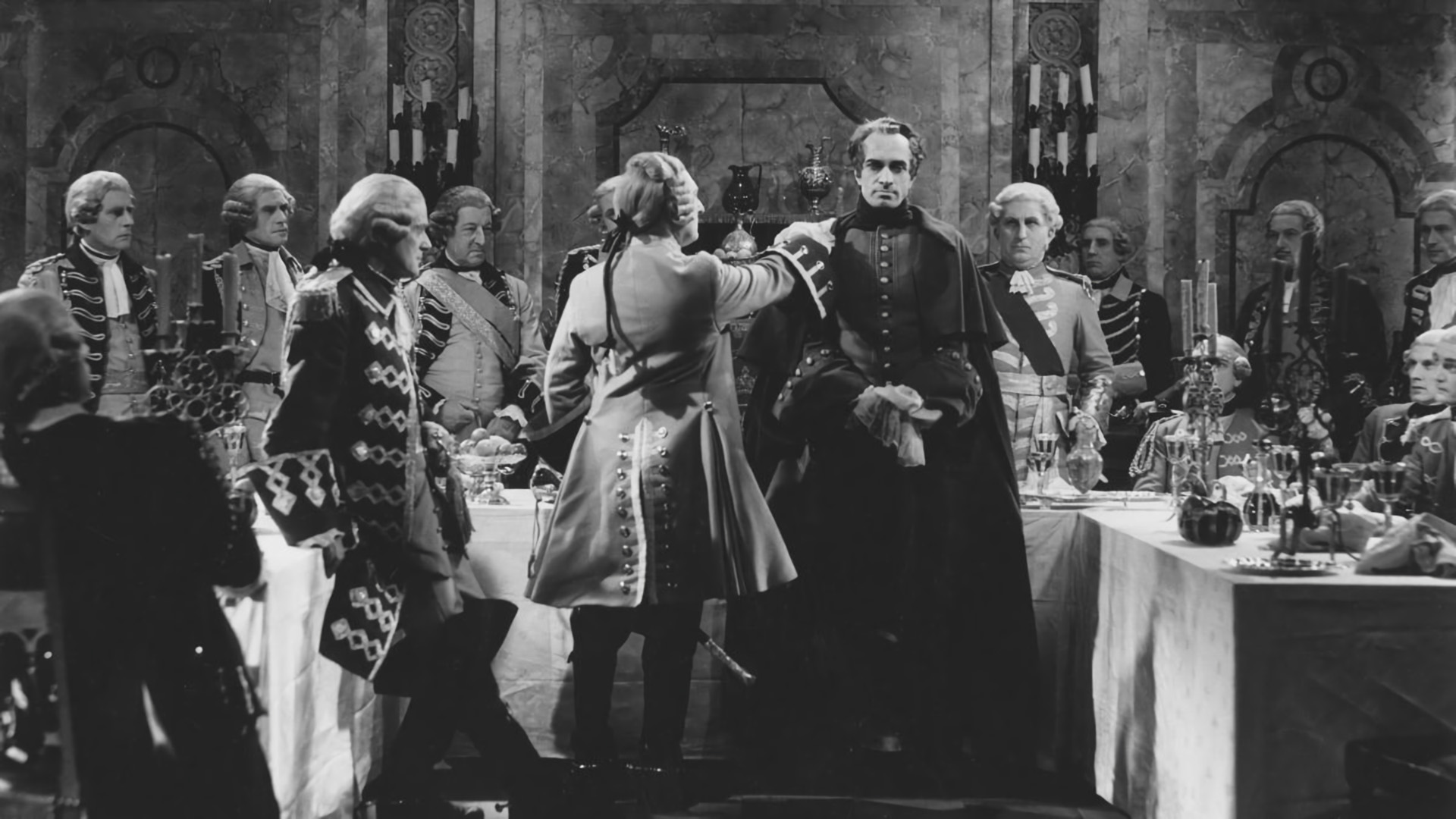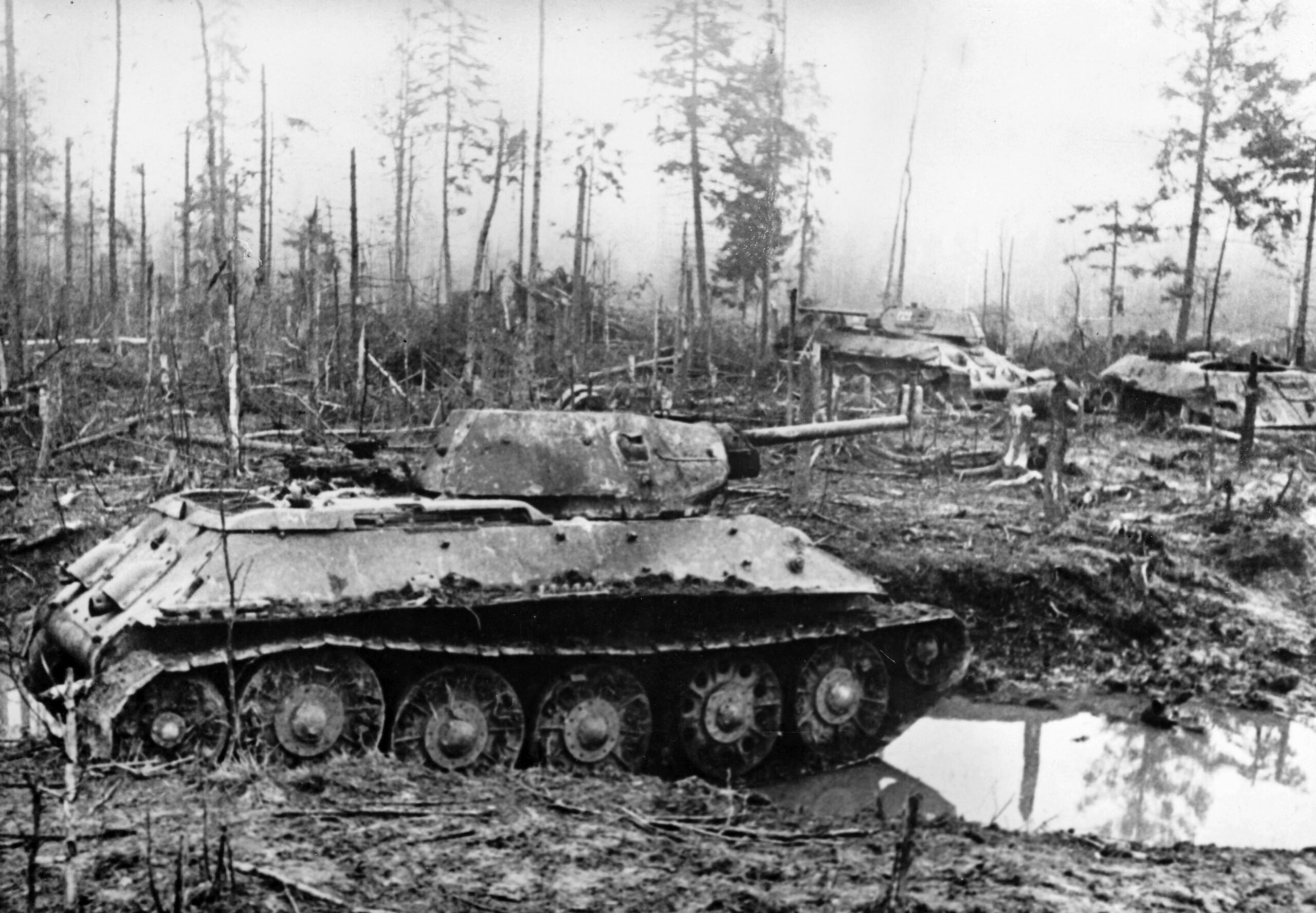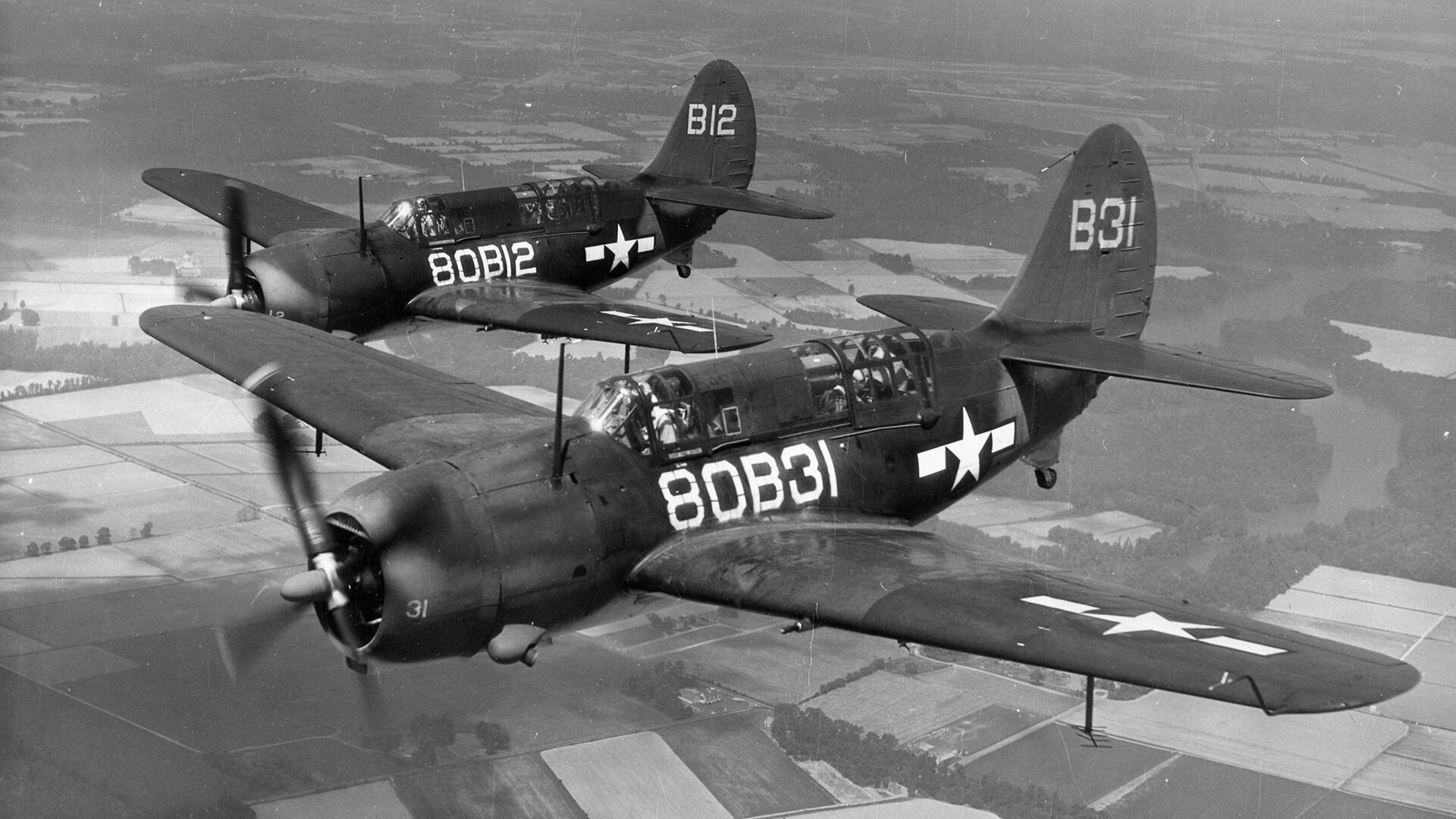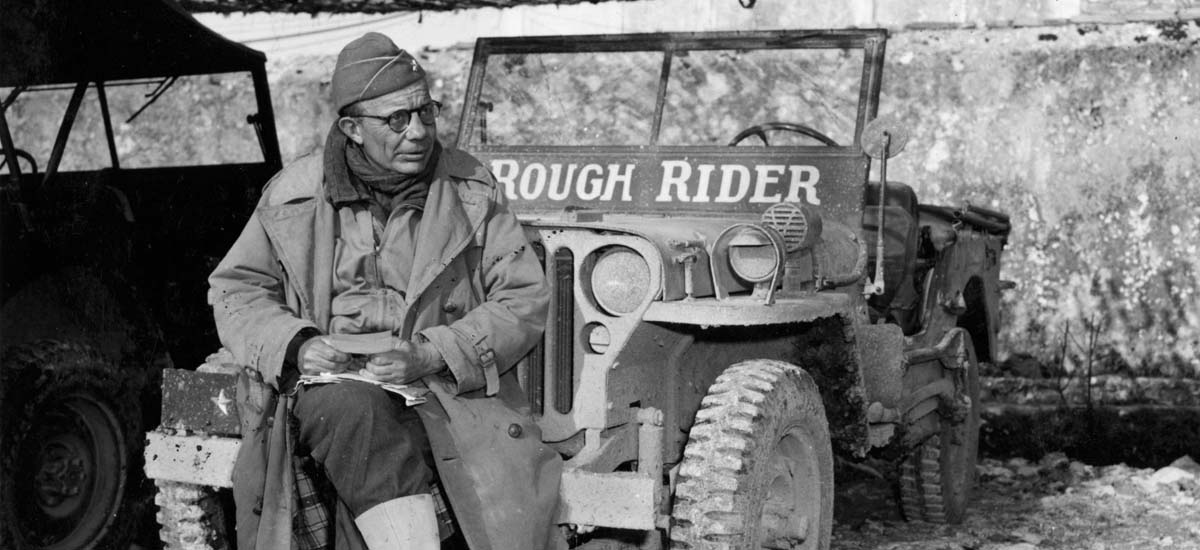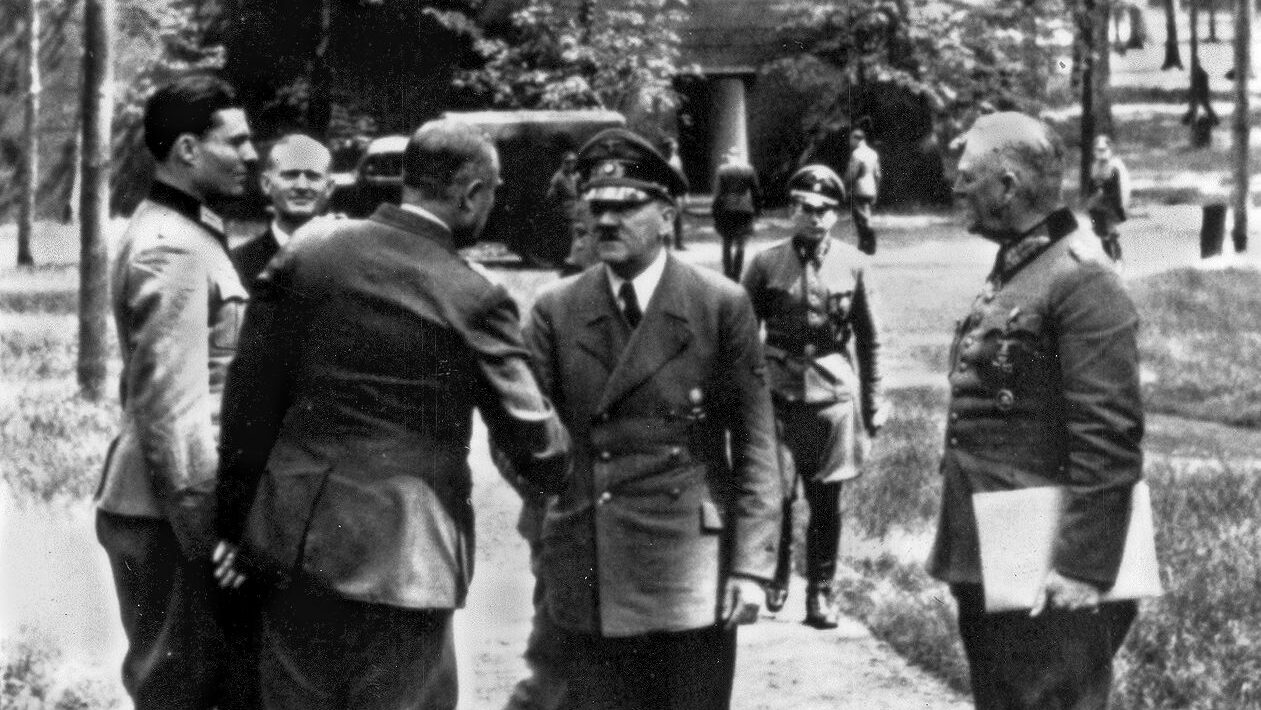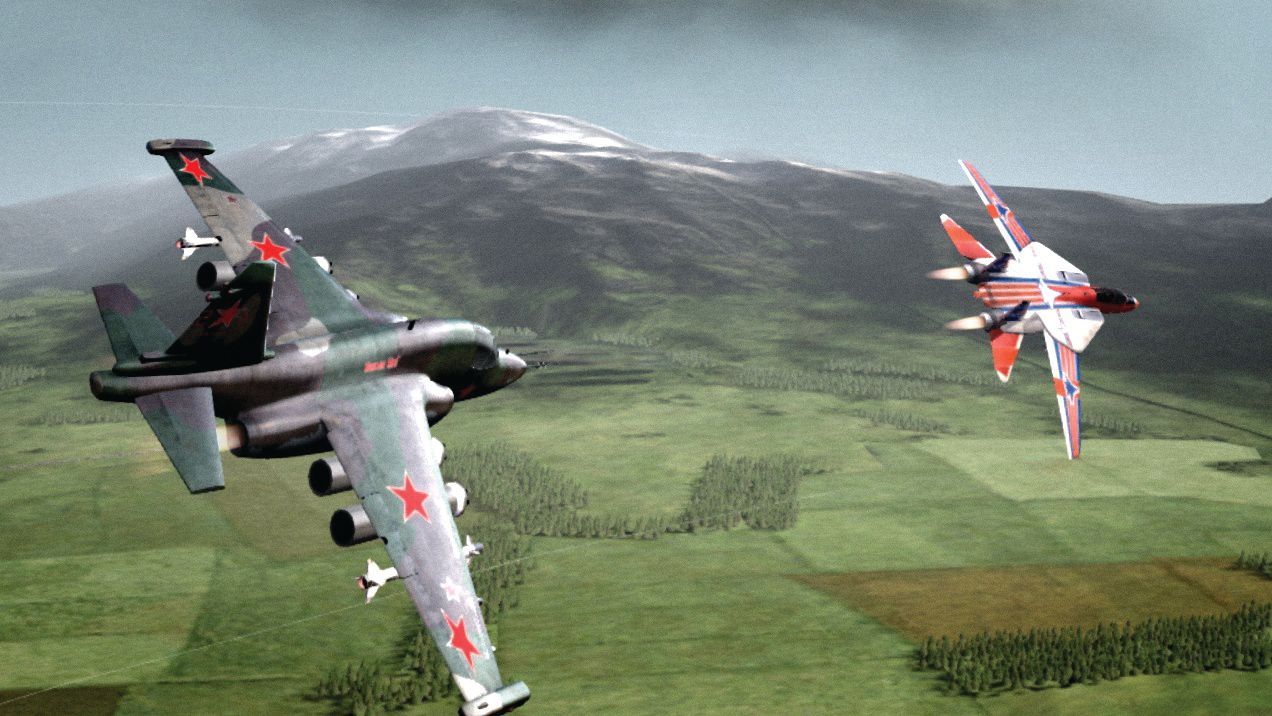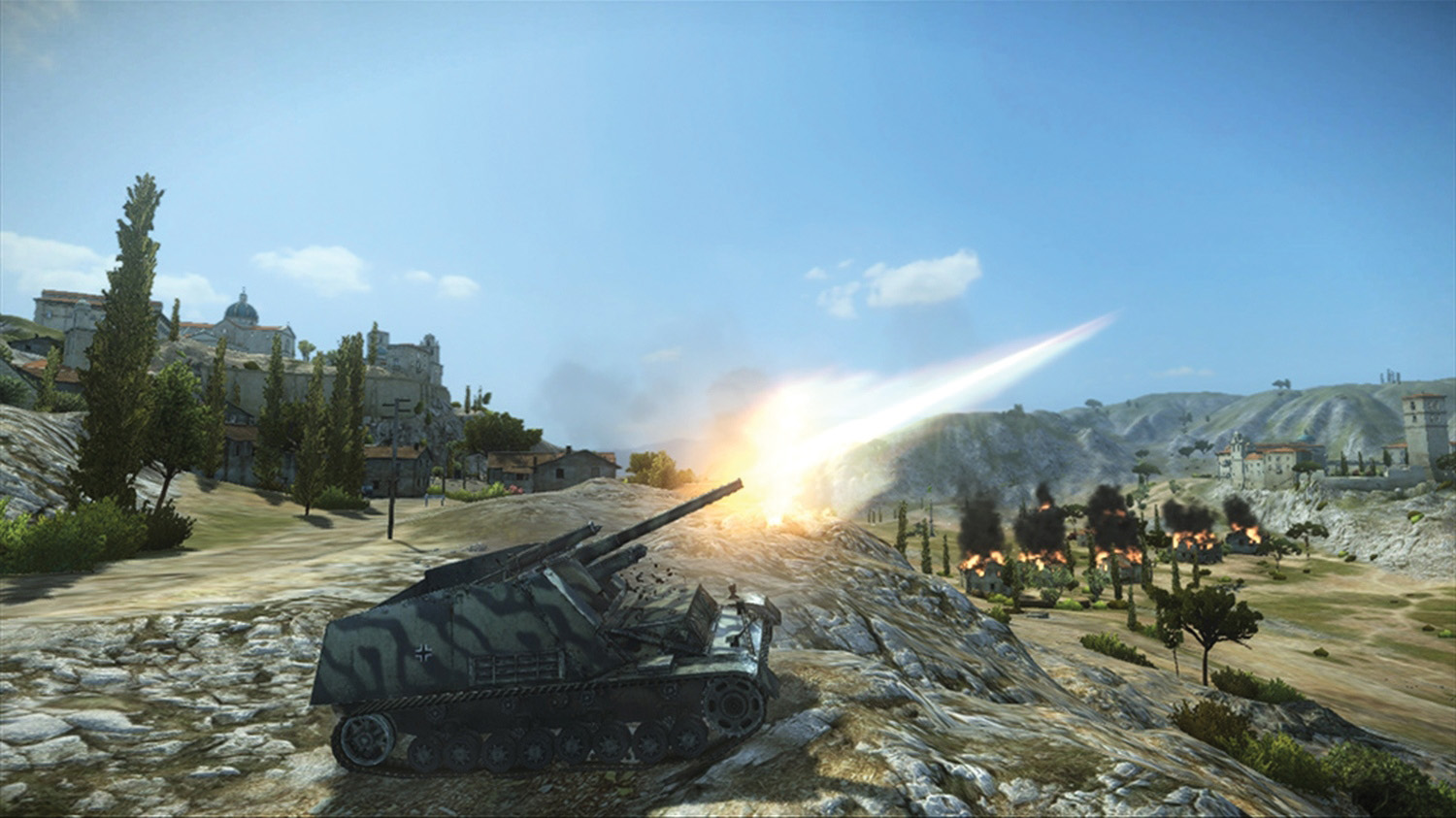By Blaine Taylor
The Russian winter of 1941-1942 hit with terrible ferocity. Battling the deadly, numbing cold as well as the massive numbers of Red Army troops were soldiers from sunny Spain. Yet the men, who were more accustomed to sipping sangria on a Mediterranean beach than trying to survive in a white, sub-zero arctic hell, were giving as good as they got. They were the men—volunteers all—of the Division Azul, or Blue Division, led by 45-year-old Maj. Gen. Agustin Muñoz-Grandes, himself one of the heroes of the Spanish Civil War.
The Tenacity of Spanish Guripas
In a battle on December 4, 1941, in which Soviet troops outnumbered the Spaniards 2-to-1, the temperatures plunged to -40 degrees Centigrade, the Blue Division fought bravely and regained some lost territory. When the fight was over, the Spaniards discovered a grotesque pile of snow-covered bodies—hundreds of their comrades who had been taken prisoner by the Soviets and tortured to death.
Resolving to avenge their comrades’ death, some members of the Blue Division found a Red Army infantry battalion trying to cross a frozen river and unleashed a fusillade of machine-gun fire against them, killing them all.
When surrounded or cornered, the Spanish GIs, known as guripas, fought to the death as the Russians did: “The only thing left for us is to die in the best possible style,” said one. Rarely did either side take prisoners, and death often came in a gruesome manner. On December 27, 1941, it was reported, “The Spanish dead lay nailed to the ground with Soviet ice picks. The wounded had been finished off. An ice pick gleamed in the center of a fallen guripa’s forehead.”
During that first winter of 1941-1942 in Russia, some German units virtually ceased to exist in the subfreezing cold, with whole regiments covered in ice and frost and looking like ghosts. Vehicles froze, horses died. Some men even died when the cerebral fluid in their brains froze solid under their steel helmets.
The brutal winter war went on. In January 1942, with the temperature down to -55 degrees Centigrade, a German infantry division found itself trapped near Lake Ilmen, and General Muñoz-Grandes received orders to send in the Blue Division to rescue the unit. Employing a task force of 370 men on skis, a Latvian platoon of 40 men, and horse-drawn sleds manned by 70 anti-Soviet Russian helpers, the force made an 11-day march, crossed the frozen lake and attacked the enemy. By the time the two-day battle ended, only 14 Spaniards were still alive, but the Soviets had been decimated.
The Bridegrooms of Death
Muñoz-Grandes praised his sturdy troops fulsomely and often: “Hard is the enemy and harder the Russian winter—even harder are my men.… You are the pride of our race. Trust in God and attack like Spaniards!” Spanish garrisons rarely surrendered, but died fighting with their weapons in their hands, a la the Imperial Japanese Army in the Pacific.
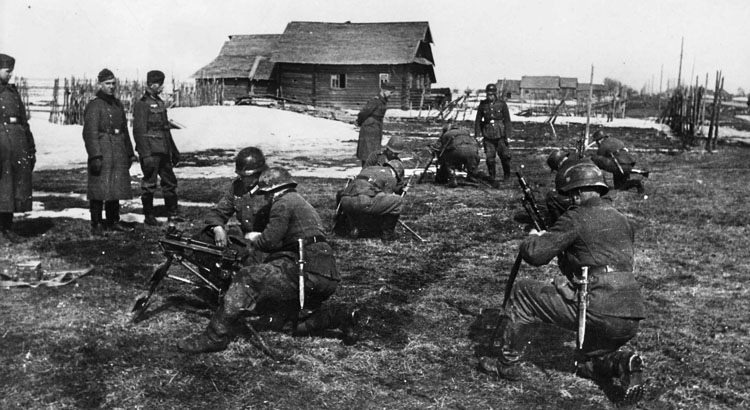
More than that, however, the fighting style of the Africanistas—the Moroccan veterans in the Blue Division—unnerved the soldiers of the Red Army. The Moroccans would send dead Russians back to their lines missing ears, noses, and fingers.
They were brutal, ruthless soldiers—“Bridegrooms of Death” as Muñoz-Grandes called them—and they forced Red Army surrenders time and again in the assault and defense, sometimes armed only with knives, bayonets, entrenching tools, and rifle butts. “Where does the road lead?” the men asked themselves, and would provide their own answer: “To glory!”
So how did Spain come to play a role in Hitler’s invasion of the Soviet Union?
It was a complex situation that all began in April 1931 when Spain’s king, Alfonso XIII, went into exile after an election that brought to power a government run by communists and socialists who called themselves “Republicans.” The electorate had been angry with the king and his dictatorial prime minister, Miguel Primo de Rivera, who had gotten the country involved in an unpopular war in Morocco, and thus voted them out of office, overturning centuries of tradition.
Franco’s Dealings with Hitler and Mussolini
Fast forward to early 1936, when Generalissimo Francisco Franco, supremely unhappy about the direction his country had taken, led a military coup against Spain’s leftist government, which touched off the bloody Spanish Civil War.
At first, Franco’s “Nationalists” made surprisingly easy gains against their Republican foes in the north and west, but the resistance hardened in such urban areas as Madrid, Barcelona, and Toledo. To help break the resistance, Franco pleaded with Nazi Germany’s Adolf Hitler and Fascist Italy’s Benito Mussolini to come to his assistance.
Seeing a chance to add Spain to their sphere of influence (Japan would join the Axis in September 1940) and thus bolster fascist power in Europe, the two leaders agreed. Both nations sent in squadrons of warplanes and ground troops, including tanks.
In August 1937, Germany’s “Condor Legion”—a combined, 19,000-man army-air force task force composed of more than 100 bomber and fighter aircraft under Hugo Sperrle and a small armored force under Wilhelm Ritter von Thoma—was formed and deployed to Spain. Mussolini also sent the Aviazione Legionaria, an aviation unit with more than 700 planes of all types and more than 6,000 men, along with the 78,500-man Corpo Truppe Volontarie (“Corps of Volunteer Troops”).
Hitler, interested in seeing how air power could be used to destroy cities, gave Sperrle a free hand to bomb Spanish cities, including the Basque town of Guernica, on April 26, 1937. In addition, large quantities of arms and ammunition were also supplied by Germany and Italy to the Nationalists. In response, the Republican side requested and received aircraft and tanks from the Soviet Union.
The Spanish Civil War raged on until March 1939, with Franco’s Nationalists finally declaring victory. Six months later, Germany went to war with France and Britain, and Hitler called in his markers. Because he had come to Franco’s aid, he now wanted Franco’s army on his side in the war against France and Britain, but Franco demurred.
After the Civil War, the Blue Division Seeks Volunteers
His attitude changed somewhat when Hitler invaded the USSR in the summer of 1941. Franco had fought against the ruling communist government in Spain, and now, here was his ally Germany fighting against the birthplace of communism and home to the champions of atheism and the arch-enemy of the Catholic Church—how could he not reciprocate?
Instead of sending standing units from his army, however, Franco called for volunteers. Enough signed up that Spain was able to offer a complete 18,700-man division called the Blue Division (blue was the color adopted by Franco’s Nationalist army, and the men wore blue shirts under their German uniforms); to the Germans, it was designated the 250th Infantry Division. Five fighter squadrons were also formed that would fly with the Luftwaffe.
The Story of General Agustin Muñoz-Grandes
Selected to command the Blue Division was Madrid-born General Agustin Muñoz-Grandes. He was a veteran of the Spanish Civil War and had led the Spanish Legionnaires in defeating Republican forces at the Battle of Malaga in February 1937.
Who was this man who would live to be named Captain General of All Spain and who led the Blue Division, which was highly respected by its German allies and feared by its Red Army foes?
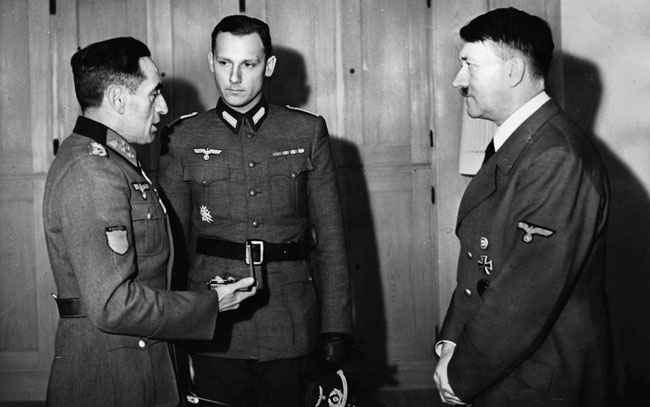
commander of the Blue Division, at his Eastern Front headquarters to present him with the Knight’s Cross of the Iron Cross with Oak Leaves.
An English volunteer who served under him in Spain during the Civil War called Muñoz-Grandes “a magnificent soldier, and incidentally a man of great charm.” Moreover, British military intelligence rated him as “one of their best and most resolute generals.”
Muñoz-Grandes was born in 1896 in the Madrid working-class district of Carabranchel Bajo and graduated from the Infantry Academy at Toledo in 1913 on the eve of World War I, during which the Kingdom of Spain prudently remained neutral. Volunteering for duty in Spanish Morocco, he won promotions commanding native forces called regulares, and even formed an elite unit, or harka, that carried his own name.
When the Spanish Republic was established in 1931, Muñoz-Grandes was named to head the Assault Guards, “a paramilitary force that was designed to counterbalance the traditionalist, and therefore suspect, Guardia Civil (National Police),” according to two historians.
He was dismissed from this post following the victory of the leftist Popular Front in the 1936 election. On July 18, 1936, the day the civil war broke out, Muñoz-Grandes was in hostile Madrid and might have been massacred by either the Red mob or the militia, but was rescued by members of the Assault Guards and Republican General Vicente Rojo. He was jailed by the left-wing Republican government, but escaped to Franco’s right-wing Nationalist lines.
During the Civil War, Muñoz-Grandes commanded a Nationalist army corps and served as General Secretary of the Movement and Chief of the Falangist Militia in Franco’s first cabinet after the victory of March 1939. This was the Falange de las JONS, or Spanish Phalanx of the Committees of National Syndicalist Action. The color of the Falange was blue, hence the later color of the Blue Division (the Republicans’ color, by contrast, was the same as the communist flag: red).
Wounded nine times and considered by all Nationalist Spaniards as one of Spain’s foremost soldiers, this intrepid warrior was known for his courage and fearlessness in battle.
His hated rival within the Falangist movement was Spain’s foreign minister (and Franco’s own brother-in-law), Ramon Serrano Suñer, who on the very day that Nazi Germany invaded the Soviet Union—June 22, 1941—offered Hitler a volunteer Spanish division to fight in the USSR. Although the Führer would have preferred a Spanish declaration of war on England along with a joint occupation of Gibraltar, the offer was accepted as a means of drawing the two fascist states closer.
“We pay the Russians a Return Visit!”: The Volunteers Assemble
The new Blue Division would comprise both regular army and Falangist militia elements, with a composite of 18,000 officers and men—all volunteers. In fact, 40,000 men would eventually serve in this division.
Franco’s first choice to command the new Blue Division was Muñoz-Grandes, primarily as a means of removing a dangerous domestic rival for political power within Spain; Suñer accepted the nomination for the same reason.
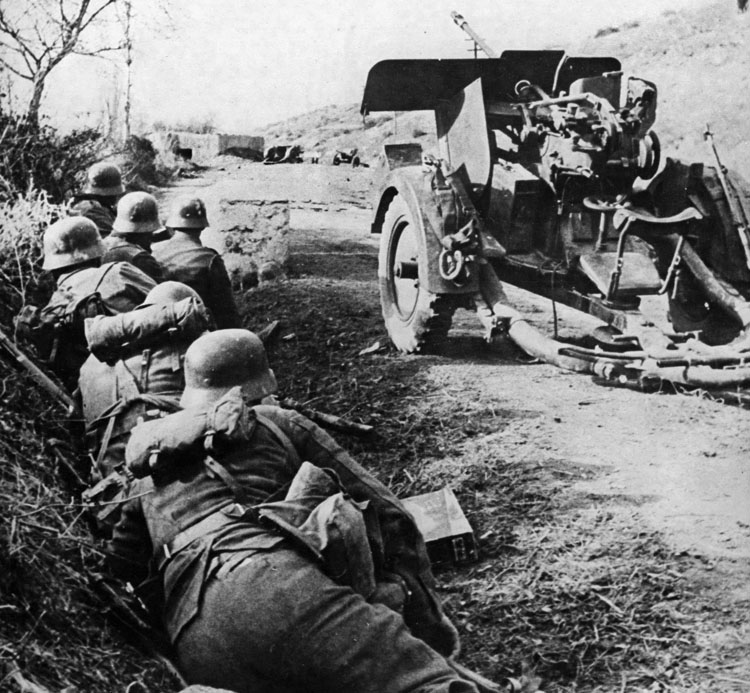
“We pay the Russians a return visit!” became the cheerful slogan of the volunteers, and their new uniforms included a cross-section of colorful haberdashery from Spanish politics: the blue shirt of the Falangists, the red berets of the Carlists, the khaki trousers of the Spanish Foreign Legion, and black boots for enlisted men, the guripas.
Each officer was similarly attired in a red beret, khaki tunic with blue collar and cuffs, a leather harness belt, khaki trousers, and high black boots. It was the predominance of the color blue that prompted almost everyone to call this new force the Division Azul, or Blue Division.
The division’s first day of formation was July 4, 1941—less than a month after Hitler’s invasion of the USSR—and the men sang the Falangist hymn, “Cara al Sol/Face to the Sun.” They also sang of being “the Bridegrooms of Death.”
On July 13—a mere 20 days after the war had started in the East—the crowds in Madrid came out to cheer the departure of 19 trains filled with 17,924 troops as they started their trip toward Germany, while Muñoz-Grandes himself flew ahead in a Lufthansa Focke-Wulf Condor 200.
Absolute Obedience to Adolf Hitler in the Fight Against Communism
On a gray morning that threatened rain at the Grafenwöhr training grounds in southeastern Germany on July 31, 1941, the Blue Division that had volunteered to fight the communists alongside the Germans on the Soviet front stood in ranks, ready to take their oath of allegiance to Adolf Hitler and the Third Reich.
After a Catholic mass was celebrated, Muñoz-Grandes drew his sword as the oath was administered: “Do you swear before God and on your honor as Spaniards,” another officer conducting the ceremony said, “absolute obedience to the Supreme Commander of the German Army, Adolf Hitler, in the fight against communism, and do you swear to fight as valiant soldiers, ready at any time to sacrifice your lives in fulfillment of this oath?” The Spanish soldiers—their right arms raised in the Fascist salute—roared, “Yes, I swear.” It seemed to be a scene right out of the 1960s-era film El Cid, a heroic role to which Franco fancied himself a successor.
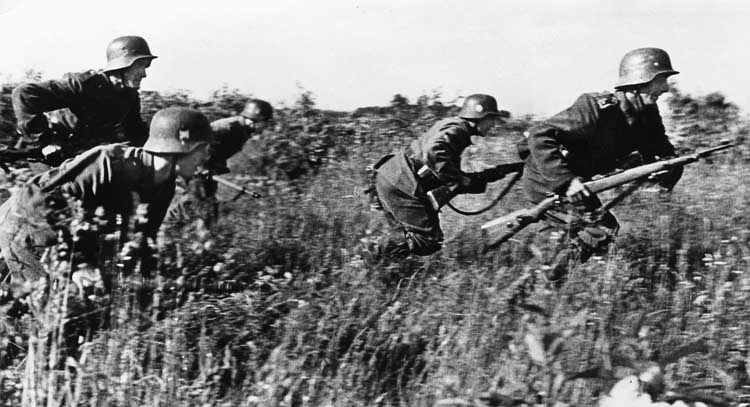
The 250th Infantry Division was now officially accepted into the German armed forces. General Muñoz-Grandes stepped up to the microphone to proclaim, “Spanish volunteers! Soldiers of honor of my motherland! Before the glorious flags of Germany and Spain, you have sworn to die before allowing barbarous Bolshevism to continue its work of hatred and destruction which has already bloodied our motherland, and which today criminally attempts to impose itself on all of Europe…. You only wish to destroy this monster—this lash of humanity—in its own lair…. Tell the Führer that we are ready and at his orders. Tell him that we have sworn the oath, and tell him that my people fulfills what it swears.”
Muñoz-Grandes was to be as good as his word—and then some. Indeed, during one of their later meetings, Hitler told Muñoz-Grandes that the Blue Division was the “only virile Latin race, equal to the best German divisions,” a pointed barb at Mussolini’s Fascist Italians.
A few weeks later, in the autumn of 1941, the Spaniards arrived on the Eastern Front, where German forces were pushing back the Bolshevik foe and inflicting heavy casualties. Originally, the Blue Division was assigned to Army Group Center for the assault on Moscow, but was reassigned to Army Group North, which was closing in on Leningrad.
“Are They Soldiers or Gypsies?”
Truth be told, the disciplined Germans were initially horrified at their Spanish partners, who one historian described as being “an undisciplined bunch of macho men who refused to practice drills, march in formation, salute, wear military uniform, or obey orders…. Their main activity in Russia seemed to be to chase local women and have a good time.”
It was true. In what little free time the Blue Division had, the Spanish guripas disobeyed German rules and engaged in sexual intimacies with known Russian Jewesses, leading German Army Field Marshal Hans Günther von Kluge to retort, “Are they soldiers or gypsies?”
They also made it clear that they were in the Soviet Union to fight communists, not to help the Germans.
Once at the front, though, Muñoz-Grandes proved to Hitler straightaway that he was his kind of field commander, an Andrew Jackson of the Eastern Front. “We will recuperate in the line. My soldiers will fight to the death!” he declared. In fact, the division was renowned for shouting “Long live death!” as they charged fearlessly into battle.
In October 1941, shortly before the Russian winter hit with a vengeance, the Blue Division had marched to the front lines, holding a 30-mile front along the Volkhov River from the southern shore of Lake Ladoga to Lake Ilmen in the Novgorod Oblast south of Leningrad.
Early Victories for the Blue Division
The Blue Division was first launched into battle on October 12 and swiftly scored a victory. This was followed by a two-day advance southward to attack the city of Dubrovka, 100 miles southwest of Moscow. Muñoz-Grandes’ men took the city but then had to spend three weeks fighting off Red Army counterattacks.
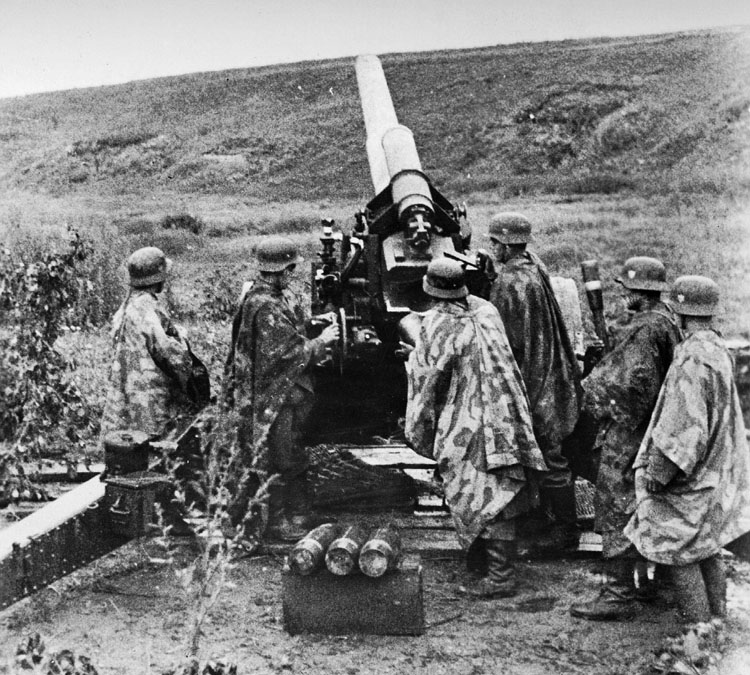
In the territory between Moscow and Leningrad (today St. Petersburg), the Spaniards fought with such ferocity that they gained the respect of the Germans and became feared by the Russians, who soon came to dread going up against them in battle. One German general said that the Spaniards fought with such wild abandon, it was as if the Russians had stolen their wives.
The year 1942 opened with renewed bitter fighting in the unrelenting cold. On January 21, an 800-man Blue Division battalion was practically destroyed by a Soviet assault; only 42 men survived. The next month the division was in the center of a Red Army attempt to split the Axis line that pushed battalions to the rear in a blinding blizzard; only the timely intervention of a combined German-Walloon (Belgian)-Latvian counterattack saved them from annihilation. As the defeated “Russkies” retreated, the guripas would taunt after them, “Otro toro! Otro toro!” (“Send in another bull!”). Stripping dead Russians of their warm clothing, they would also pry from their frozen fingers weapons with which to continue the fight.
The air force squadrons also gave a good account of themselves. Twenty-two Spanish pilots shot down 156 Soviet warplanes.
Reich Chancellor Hitler was so impressed with the Blue Division that in his April 26 speech in the German Reichstag in Berlin’s Kroll Opera House he asserted, “The Spaniards have done all that we ask of our own soldiers.… They and their general [Muñoz-Grandes] know the meaning of loyalty and bravery unto death.”
To reward General Muñoz-Grandes for his leadership and assistance in the war against the Soviet Union, Hitler personally presented him with the Knight’s Cross of the Iron Cross with Oak Leaves.
When the spring thaw arrived, the Germans renewed their offensive. Thrown into battle at Bolshoye Shamoshe east of the Keresti River, the depleted Blue Division fought valiantly. At nearby Maloye Shamoshe, the division killed or captured more than 5,000 Russians while losing only 274 of their own.
Would Spain Maintain its Neutrality between the Axis and Allies?
Muñoz-Grandes was replaced as commander of the Blue Division by Brig. Gen. Emilio Esteban Infantes (who would also be awarded the Knight’s Cross on October 5, 1943). His successor was already planning a second Spanish division of volunteers to fight alongside the Germans in the USSR, but it was not to be, for Franco had decided to shift his political gears in the light of the German defeats at Stalingrad and Kursk.
Franco had already replaced Suñer, his pro-Axis foreign minister—brother-in-law or no—in September 1942 with a pro-Allied Spanish general as a sign of his hardening policy of official neutrality, and when Muñoz-Grandes returned home to a hero’s welcome at Madrid on May 24, 1942, Franco promoted his paladin to the rank of lieutenant general in the Spanish Army, but was also keenly aware that both the Germans and the general saw the latter as the eventual successor—or perhaps sooner replacement—to the wily Caudillo (leader.)
Indeed, if Spain formally entered the war on the side of the Axis, it was agreed that Muñoz-Grandes would have the post of minister of the interior—akin to the role played by Hitler’s police chief, Heinrich Himmler, head of the Gestapo and SS in the Third Reich.
More than that, the Germans saw Muñoz-Grandes as part of a Spanish military junta that would force Franco to join the Axis and also ask for German arms. To somewhat co-opt him, the Caudillo offered Muñoz-Grandes the options of taking a new cabinet post or becoming the Spanish ambassador in Berlin, but the general refused both so as not to be a tool of those he considered to be reactionaries.
In 1942, with the Blue Division having suffered heavy casualties from battle and frostbite, Franco decided that the unit and Muñoz-Grandes had had enough and brought them home. However, thousands of die-hard volunteers, along with recently arrived replacements, refused to leave, choosing instead to stay in the fight until the very end despite having to give up their Spanish citizenship to do so. This reconstituted, 3,000-man force became known as the Legion Azul, or Blue Legion, commanded by Miguel Ezquerra.
Upon returning home to a hero’s welcome, Muñoz-Grandes was awarded the highest Falangist award as well. There were other honors but also great suspicion: someone as accomplished as Muñoz-Grandes could very well lead a coup to topple Franco. A close eye would have to be kept on him.
Holding Their Ground Against Russian Forces Seven Times Larger
In August 1942, the Blue Legion was moved north to man the southeastern flank of the Leningrad siege, just south of the Neva River near Pushkin near the Izhora River. The German southern front at Leningrad was crumbling in the face of ferocious Red Army attacks and the Legion was under heavy pressure from the 55th Soviet Army in February 1943 when that Soviet force attacked Spanish positions at the Battle of Krasny Bor near the main Moscow-Leningrad road.
Despite suffering heavy casualties, the Spaniards held their ground against a Russian force seven times larger. The assault was contained and the siege of Leningrad went on for another year. To bolster the Legion’s declining numbers, Franco dispatched more reinforcements, including conscripts as well as volunteers. Throughout the summer of 1943, the depleted Blue Legion continued to hold its positions while reinforcements from Spain trickled in.
As Legion ranks became depleted, the Germans attached its remaining units to such Waffen-SS units as the Panzer Grenadier Nordland Division and Storm Brigade Wallonien. The Spaniards were also called up to bolster Germany’s fighting retreat throughout Russia in 1943 and 1944. A historian noted that they also “proved merciless in destroying anti-German resistance in Yugoslavia, Romania (in Bukovina), and France. Some of them also took part in the Ardennes offensive.”
Meeting with Franco and Muñoz-Grandes on August 20, 1943, British Ambassador to Madrid Sir Samuel Hoare demanded the withdrawal of the Blue Legion from Russia. Six weeks later, on October 1, Franco declared Spain’s official neutrality in the European war.
Hitler Sends the Legion Back
The Blue Legion was now in for bad times. In December 1943, the Germans ordered the legion to the front where they were told to hold a line of six and a half miles at Kostovo. So widely spaced were legion ranks that two tanks abreast could have passed between each infantryman. On Christmas day, the Soviet assault began, but the Spanish legionnaires refused to yield, picking off advancing troops for days and then weeks.
As for their own dead, when they were surrounded and the Red Army would taunt, “Kill your officers and join us,” the Legion’s last truck in retreat would remove all the crosses from their cemeteries so that their comrades’ bodies could not be dug up and desecrated by the Reds.
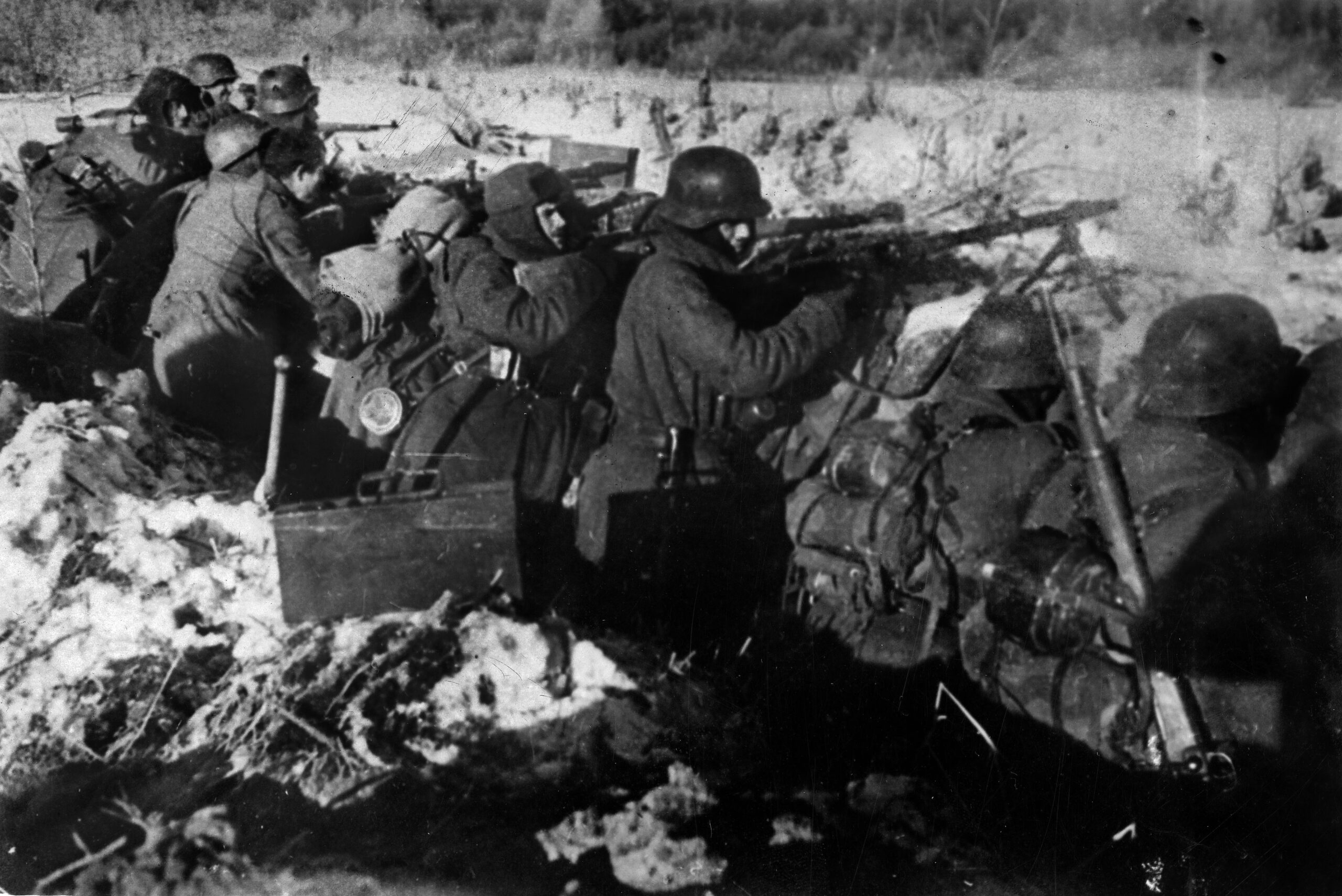
Finally ordered to abandon their positions during a blizzard, the survivors pulled back and made it to Estonia on January 7, 1944. There the frozen, numbed Spanish soldiers were assigned the duty of guarding the Baltic Sea coast.
On February 20, 1944, Hitler informed Franco that the Legion had performed its duty and was sending it back, and on March 6, many of the guripas assembled for the final trip home. As one officer said, “This is a bitter moment.… The Legion must return to Spain!… Return home with the proud feeling that you have done your duty.… On this day of sorrow, you will carry your rifle barrels down, as in a funeral, or in Holy Week. Long live the Legion! Franco! Franco! Franco!”
What Became of the Blue Division
The survivors were back in Spain by the end of April 1944, although some elected to stay and fight, and thus were incorporated as such into the German forces. With the war in Europe coming to a close, many of the Blue Legion survivors ended up in Berlin, fighting alongside the Wallonians and the Nordland Division outside of Hitler’s bunker. But resistance was futile and those defenders who weren’t killed were captured by the Red Army and sent to POW camps inside the USSR, where many died.
The Spaniards left an unparalleled combat legacy on the Eastern Front, but it came at a heavy price. By war’s end, some 22,000 volunteers had become casualties—5,000 dead, 8,000 wounded, and hundreds missing or taken prisoner. A decade after the war, 300 captured Spanish survivors were released from their Siberian prison camps and finally allowed to return home.
And what of their first commander, Agustin Muñoz-Grandes himself? As Franco suspected, he returned home wanting to cleanse his country of military cabals, Falangist intriguers like Suñer, and even Franco. Instead, once more Generalissimo Franco slyly co-opted his military fame, in 1953 making Muñoz-Grandes Madrid’s negotiator with the United States with fellow general and now president Dwight D. Eisenhower to permit American air bases in Spain that paved the way for Franco’s return to the European community after his long honeymoon with fascism.
Muñoz-Grandes retired from the Army in 1966 at age 70, but retained the rank of chief of staff, as well as remaining as first vice president, a post he had assumed in 1962. Franco abruptly removed him from that position too in July 1967. Muñoz-Grandes died at age 74 on July 12, 1970, and Franco followed him in death on November 20, 1975.
In February 2015, a group of left-wing, antifascist radicals rampaged in Madrid and destroyed Muñoz-Grandes’ tomb.
